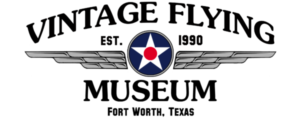
Douglas A-3 Skywarrior
Role: Strategic bomber
Manufacturer: Douglas Aircraft Company
Designer: Ed Heinemann
First flight: 28 October 1952
Introduction: 1956
Retired: 27 September 1991
Primary user: United States Navy
Produced: 1956–1961
Number built: 282
Developed into Douglas B-66 Destroyer
The Douglas A-3 Skywarrior was designed as a strategic bomber for the United States Navy, but its primary function for much of its later service life was as an electronic warfare platform, tactical air reconnaissance platform, and high capacity aerial refueling tanker. In these roles it was among the longest serving carrier-based aircraft in history, entering service in the mid-1950s and retired in 1991. Throughout its service, it was the heaviest operational aircraft to operate from aircraft carriers, earning its nickname, “The Whale.”
The Skywarrior is one of only two U.S. Navy attack aircraft intended as a strategic bomber to enter full-scale service, the other being its predecessor, the North American AJ Savage. The carrier-based supersonic North American A-5 Vigilante was also originally designed for strategic nuclear strike missions and initially, very briefly, supplanted the A-3 in that role beginning in the early 1960s. However, with the removal of aircraft carriers from the Single Integrated Operational Plan (SIOP), the realization that very high altitude penetration of the Soviet Union was no longer feasible, and the transfer of the U.S. Navy’s strategic nuclear deterrence mission to the Fleet Ballistic Missile submarine force, the Vigilante saw its mission changed to carrier-based tactical air reconnaissance.
A modified derivative, the B-66 Destroyer, served in the U.S. Air Force until the early 1970s as a tactical bomber, electronic warfare aircraft, and reconnaissance platform.
Vietnam War era
The EA-3 variant was used in critical electronic intelligence (ELINT) roles operating from aircraft carrier decks and ashore supplementing the larger Lockheed EP-3. Its last service was as an ELINT platform during Desert Storm.
Reconnaissance
The EA-3B variant was modified for electronic intelligence against the Warsaw Pact. Missions were flown around the globe beginning in 1956, with the U.S. Air Force EB-47 Stratojet flying a similar mission. The EA-3B carried a crew of seven, with flight crew of three in the cockpit and an Electronic Warfare Officer and three electronic systems operators/evaluators in the converted weapons bay. It offered unique electronic reconnaissance capabilities in numerous Cold War-era conflicts and the Vietnam War.
Retirement
EA-3Bs remained in service long enough to participate in the first Gulf War in 1991. The Skywarrior was out of Navy service by September 1991, with the last USN Skywarriors retiring on 27 September 1991. U.S. Navy RDT&E units, notably Naval Air Systems Command (NAVAIR) activities at NAS Point Mugu and NAWS China Lake, attempted to retain their A-3 testbeds. This plan ultimately failed when Vice Admiral Richard Dunleavy, as Deputy Chief of Naval Operations for Air Warfare and an old A-3 bombardier/navigator himself, made the final decision to retire the type.
